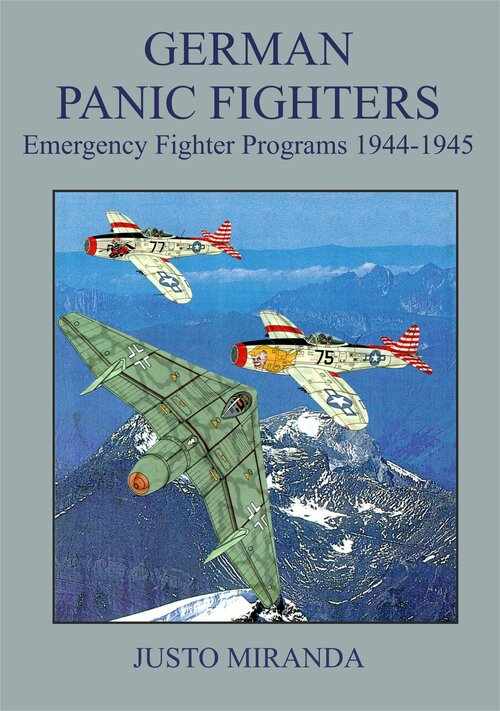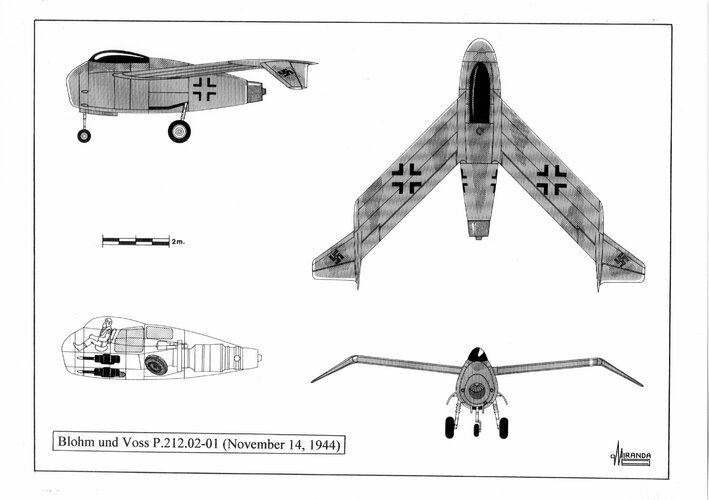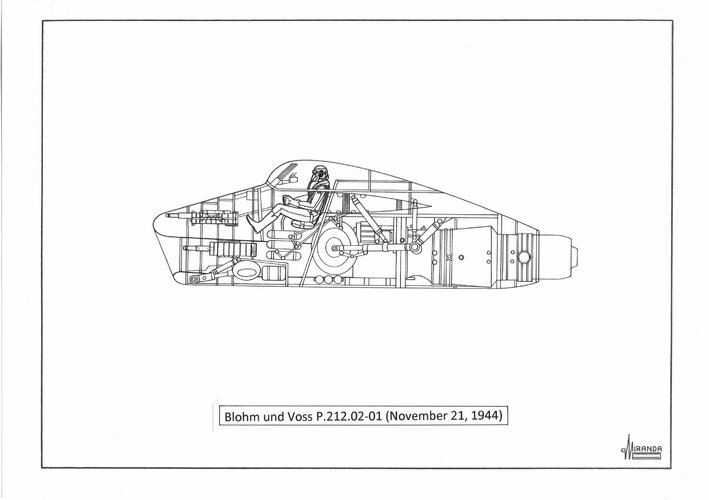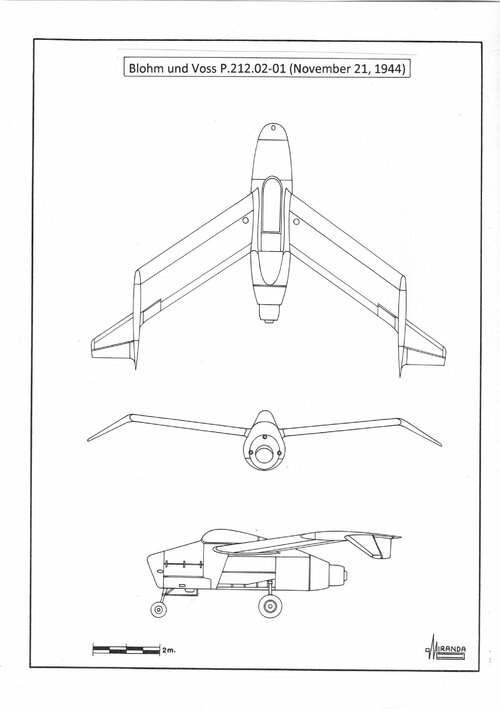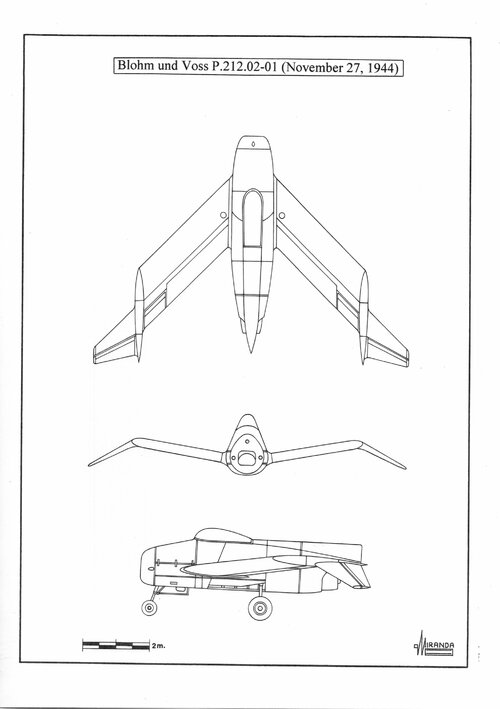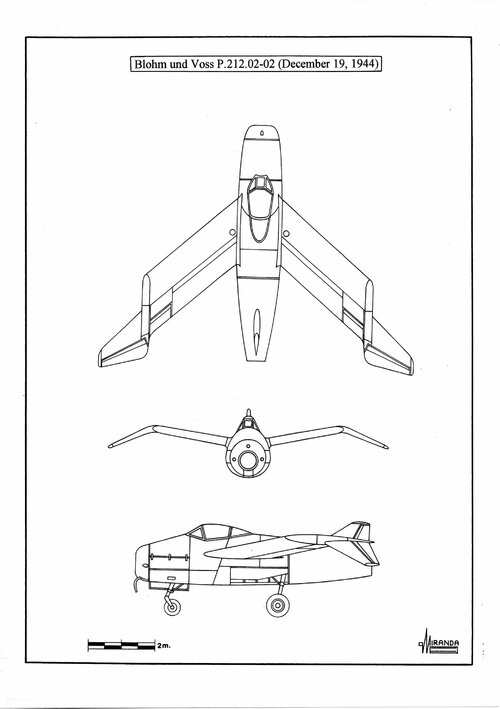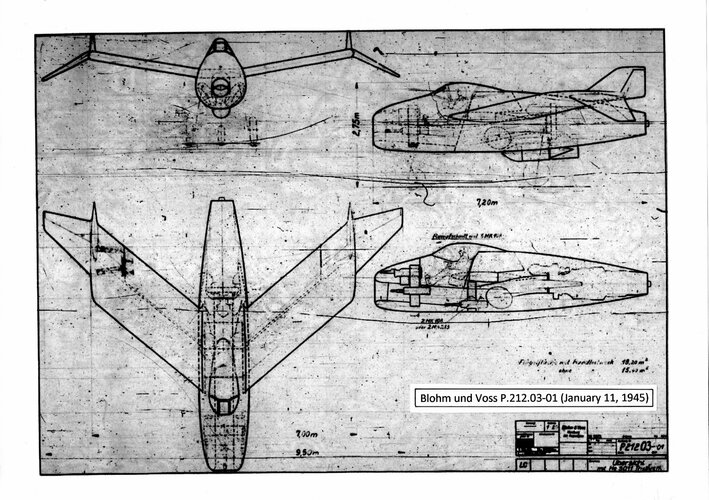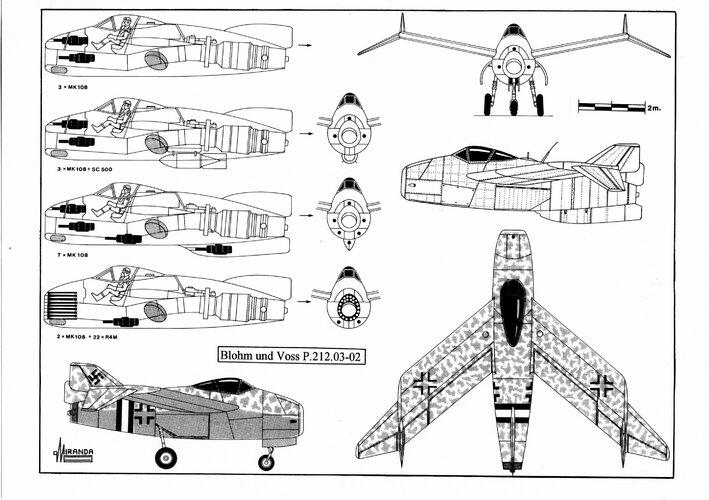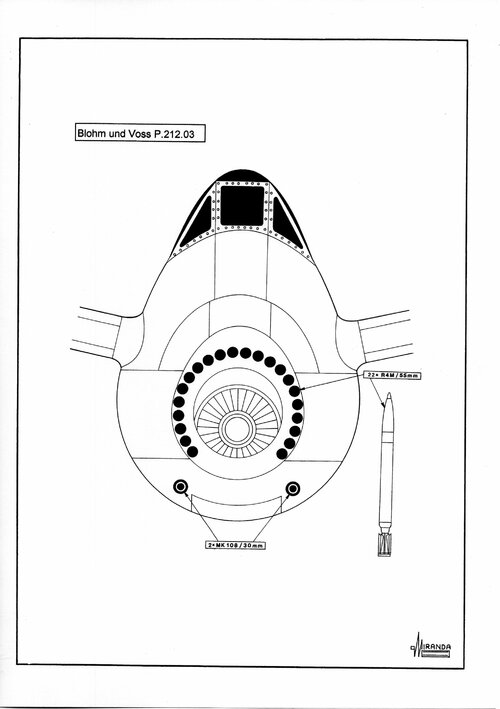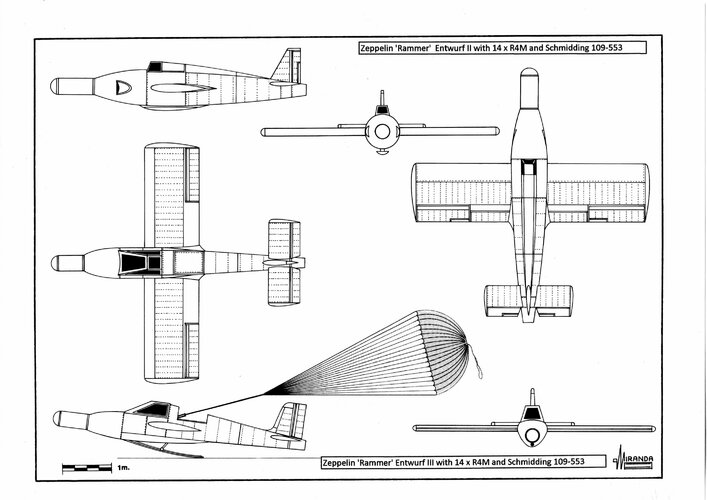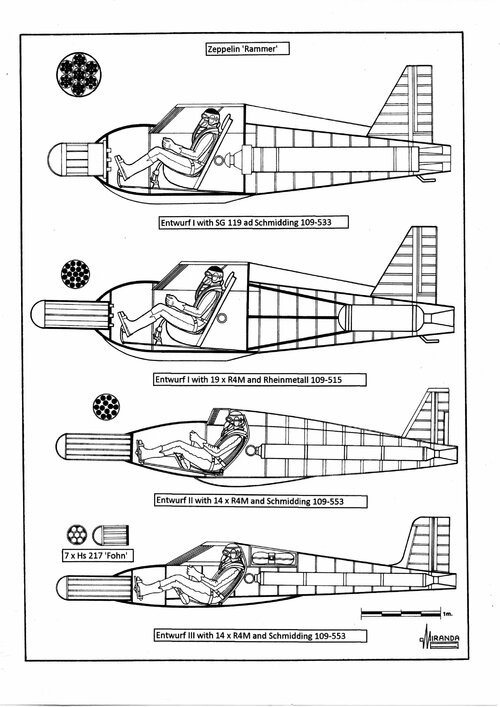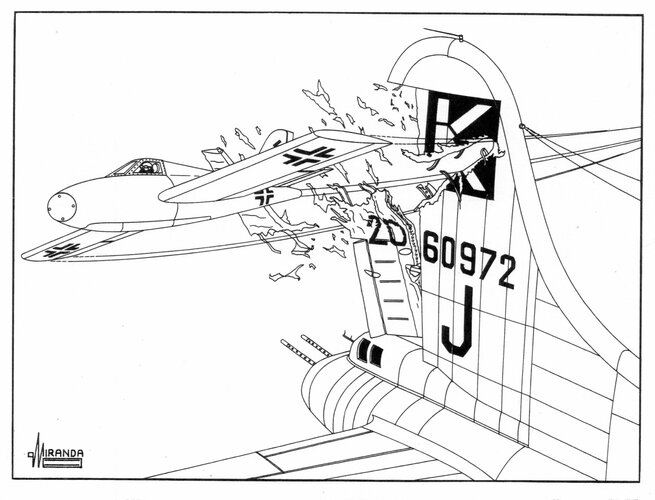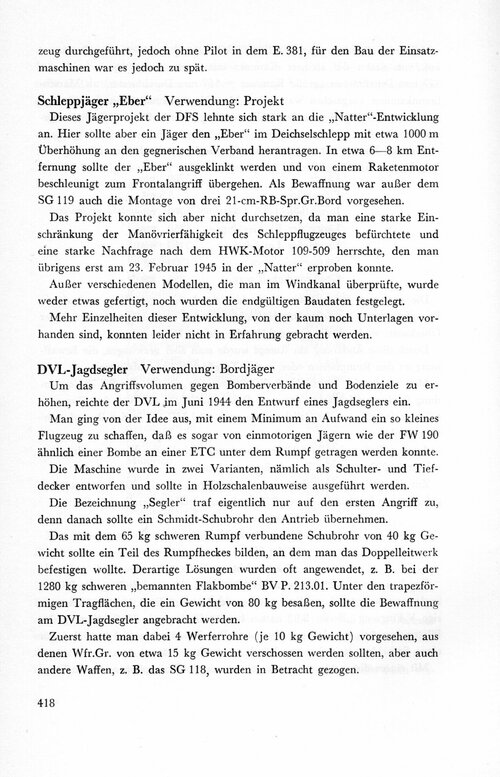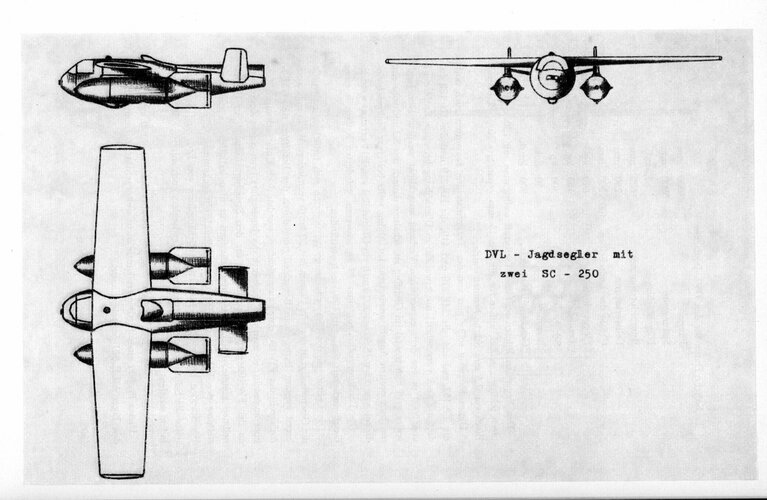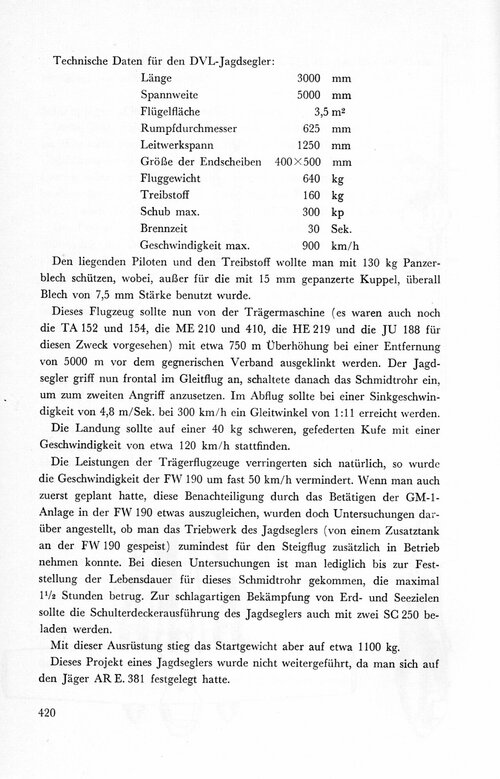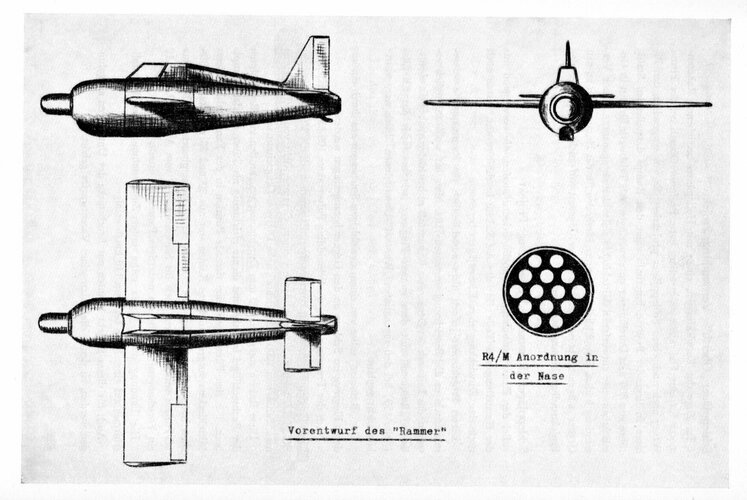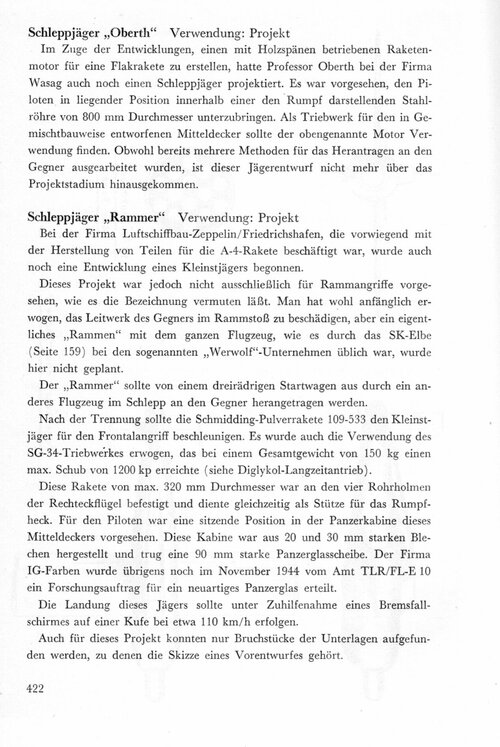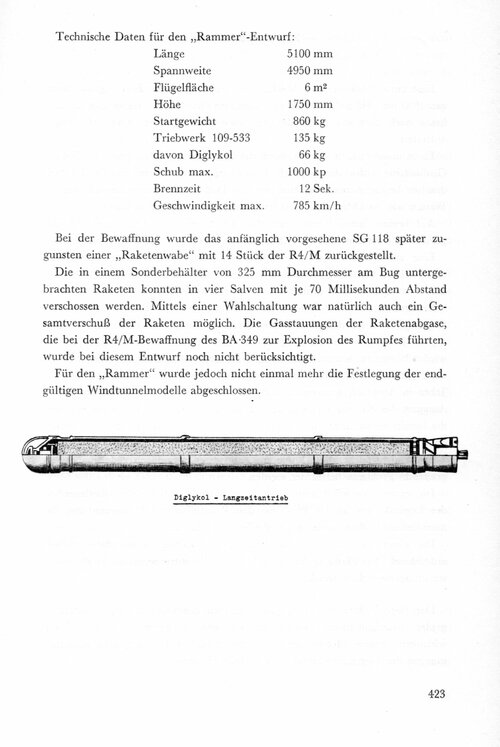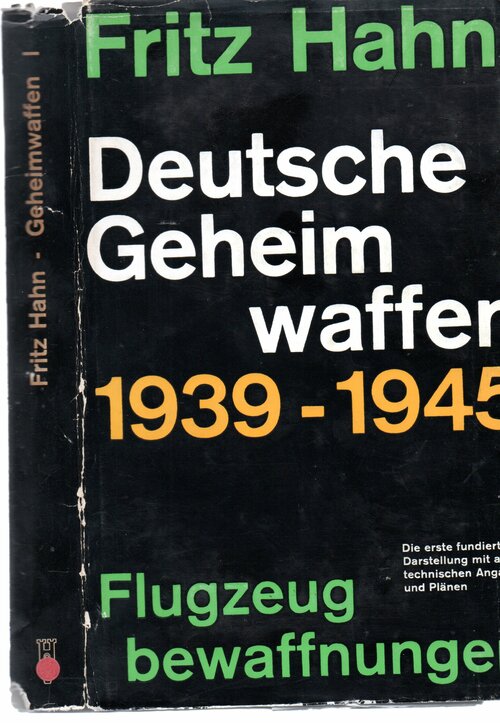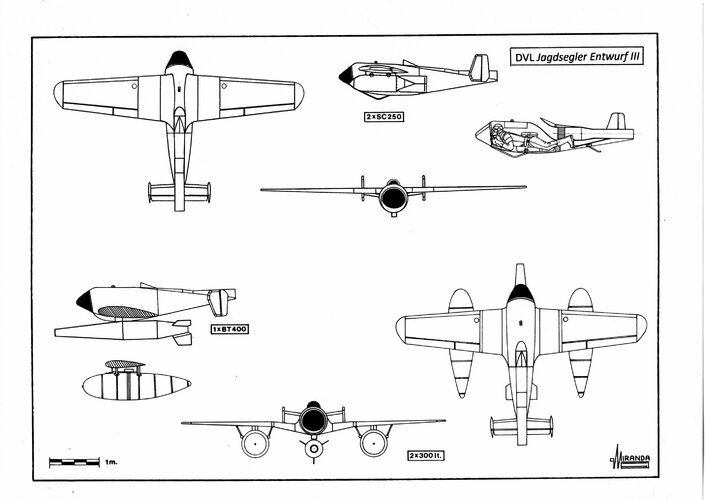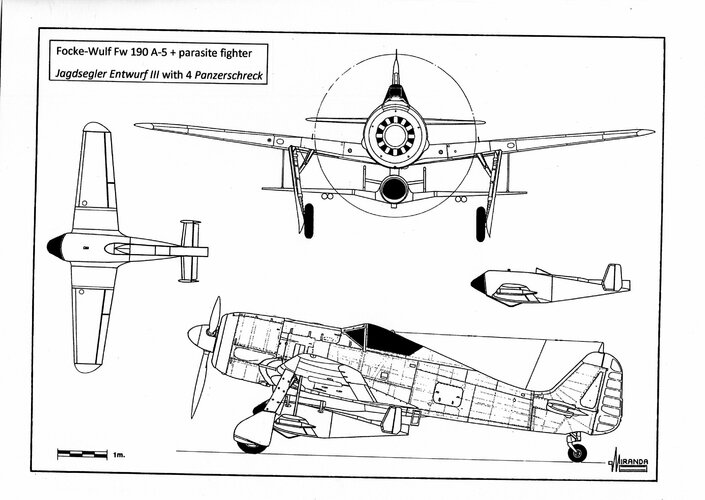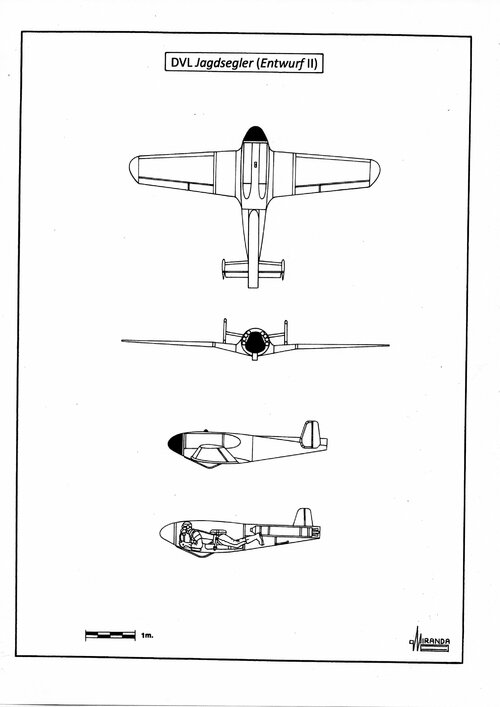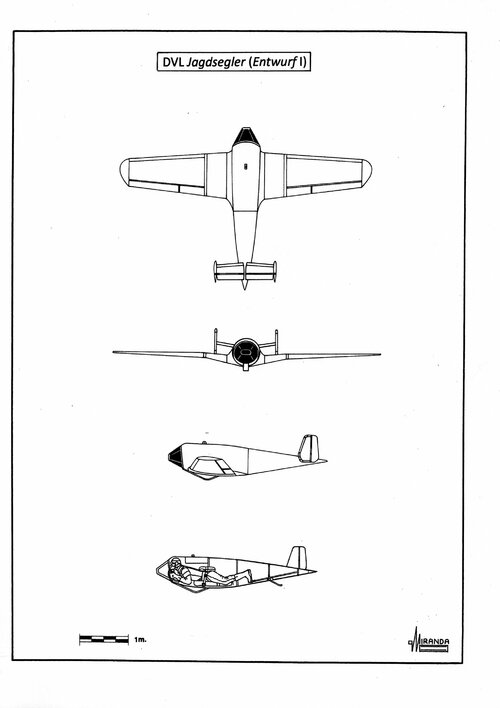German Panic Fighters
Emergency Fighter Programs 1944-1945
Emergency Fighter Programs 1944-1945
During the second half of 1943, the arrival of numerous Mustang and Thunderbolt US fighters to the British bases multiplied by four the number of airplanes of the Eighth Air Force, altering the course of the war over the Reich in favour of the Allies. In a few weeks, the Jagdwaffe began to experience increasing losses: 21 percent of its fighters in November and 23 percent in December. By early April 1944 the US fighter pilots were ordered to pursuit the German interceptors to their bases with groups of more than fifty aircraft and attack them while refuelling.
As France in 1939, the USSR in 1941 and Australia in 1942, the Germans began to consider the mass construction of a ‘panic fighter’ that would stop the advance of the invader.
Between May of 1943 and March 1945 the Oberkommando der Luftwaffe issued eighteen specifications demanding different types of fighters to regain air superiority over the Reich.
The aeronautical industry responded with the 145 projects described in this book in 228 pages of drawings and 63,000 words.
CONTENTS
INTRODUCTION
Hochgeschwindigkeits program
Messerschmitt Me 262 HG I (April 18, 1944)
Messerschmitt Me 262 HG II (July 28, 1944)
Messerschmitt Me 262 HG III Entwurf I (December 22, 1944)
Messerschmitt Me 262 HG III Entwurf II (February 12, 1945)
Junkers Jumo 004 C turbojet
Me 262 Interzeptor and Me 262 Heimatschützer programs
Interzeptor I (July 7, 1943)
Interzeptor II (July 6, 1943)
Interzeptor III (July 21, 1943)
Heimatschützer I (February 26, 1945)
Heimatschützer II (March 28, 1945)
Heimatschützer III
Heimatschützer IV (January 11, 1945)
BMW 003 TLR mixed power engine
Messerschmitt emergency fighters with Jumo 004 turbojet
Messerschmitt Bf 109 1-TL Jäger (January 1943)
Messerschmitt/Lippisch P.20 (April 1943)
Messerschmitt P.1092 Series (May 1943)
Messerschmitt Me 328 C (October 1943)
Messerschmitt P.1095 Series (October 1943)
Lippisch P.15 Diana (April 4, 1945)
Jägernotprogramm
Arado E 581-4 with HeS 011 (December 19, 1944)
Blohm und Voss P.209-02 (September 29, 1944)
Blohm und Voss P.212.02-01 (November 14, 1944)
Blohm und Voss P.212.02-01 (November 21, 1944)
Blohm und Voss P.212.02-01 (November 27, 1944)
Focke-Wulf 1-TL Jäger Projekt V (February 1944)
Focke-Wulf 1-TL Jäger Projekt VI-Flitzer III (July 20, 1944)
Heinkel P.1073.01-4 Schneller Strahljäger (July 10, 1944)
Heinkel P.1073 (October 23, 1944)
Heinkel P.1078 C (December 15, 1944)
Henschel P.135 (December 1944)
Messerschmitt P.1101 Series (August 1944)
Heinkel He S 011 A-0 turbojet
Hochleistungsjäger
Focke-Wulf P.011.001 (January 1944)
Focke-Wulf 1-TL Jäger Projekt VI- Flitzer I (February 1944)
Focke-Wulf Ta 183 Ra-1 (December 1944)
Heinkel He 162.01-42 (March 12, 1945)
Horten Ho XIIIb Überschalljäger (March 1945)
HeS 011R combined turbojet and rocket engine
Volksjäger competition
Arado E 580 (September 12, 1944)
Arado E 581-4 with BMW 003 E (September 14, 1944)
Blohm und Voss P.209.01
Blohm und Voss P.210.01 (September 12, 1944)
Blohm und Voss P.211.01 (September 14, 1944)
Blohm und Voss P.211.02 (September 29, 1944)
Dornier Kleinstjäger
Focke-Wulf Volksflitzer (September 8, 1944)
Focke-Wulf Volksflugzeug (September 20, 1944)
Heinkel P.1073.01-18 Strahljäger (September 11, 1944)
Heinkel P.1073.01-20 Kleinstjäger (September 25, 1944)
Heinkel He 162 (October 4, 1944)
Heinkel He 162 V1 Volksjäger (December 10, 1944)
Horten Volksjäger I&II
Junkers EF 123/124 (September 14, 1944)
BMW 003 turbojet
Reserve fighter competition
Arado E 581-5 (January 12, 1945)
Blohm und Voss P.212.02-02 (December 19, 1944)
Blohm und Voss P.212.03-01 (January 11, 1945)
Blohm und Voss P.212.03-02 (February 1945)
Blohm und Voss P.217 (February 5, 1945)
Focke-Wulf Ta 183 B - P.011.039a (February 18, 1945)
Heinkel He 162 “D” (September 8, 1944)
Heinkel He 162 “C” (October 23, 1944)
Junkers EF 128 (February 15, 1945)
Messerschmitt P.1106 (December 14, 1944)
Messerschmitt P.1106 (January 12, 1945)
Messerschmitt P.1110 (January 1945)
Messerschmitt P.1110 (February 27, 1945)
Messerschmitt P.1111
Messerschmitt P.1112/S2 (March 3, 1945)
Messerschmitt/Lippisch P.15 (March 3, 1945)
Pulsejets
Schmidt SR 500
Projects with SR 500
Horten Ho Vc Leichtes Kampfflugzeug (March 19, 1942)
Argus As 014
Messerschmitt Me 328 A-1 (December 15, 1942)
Messerschmitt Me 328 A-2 (December 15, 1942)
Messerschmitt Me 328 A-3 (December 15, 1942)
Miniaturjäger program
Blohm und Voss P.213.01-01
Pulsejet fighters with Argus As 014
Argus fighter
Heinkel He-162 A-10
Henschel P 90 Ente
Argus As 044
Pulsejet fighters with Argus As 044
Heinkel P.1077 Romeo I
Heinkel He-162 A-11
Hütter Fagott Interceptor
Schlachtflugzeug program
Argus-Junkers Schlachtflugzeug
Heinkel P.1077 Romeo II
Hütter Schlachtflugzeug
Junkers EF.126 Lilli
Other Pulsejets
DFS Eber Entwurf III
DVL Jagdsegler Entwurf III
The Gleitjäger concept
Blohm und Voss P. 186
Blohm und Voss BV 40
Verbrauchsflugzeug competition
DFS Eber Entwurf II
DVL Jagdsegler Entwurf II
Zeppelin Fliegende Panzerfaust
Solid-propellant rockets
Bordjäger concept
Arado E 381-01
Arado E 381-02
Arado E 381-03
Blohm und Voss BV 40 (September 1944)
Messerschmitt P.1103 (September 12, 1944)
Bi-propellants rocket-engines
Rammschussjäger specification
Bachem rocket fighter (16.7.44)
Bachem BP-20 Berak I
DFS Eber Entwurf I
DVL Jagdsegler Entwurf I
Focke-Wulf Rammjäger
Gotha P.54/ I and P.54/ II
Gotha P.56 and P.57
Lippisch Rammer
Messerschmitt P.1103 (July 6, 1944)
Stöckel Rammschussjäger Entwurf I
Stöckel Rammschussjäger Entwurf II
Stöckel Rammschussjäger Entwurf III
Zeppelin Rammer Entwurf I
Zeppelin Rammer Entwurf II
Zeppelin Rammer Entwurf III
Strahlrohrjäger concept
Focke-Wulf Ta 283
Focke-Wulf Super Lorin
Heinkel P.1080-01
Lippisch Delta VI (12-4-1944)
Lippisch P.12 Entwurf I
Lippisch P.12 Mock-up
Lippisch P.12 Entwurf II
Lippisch P.12 Entwurf III
Lippisch P.12 Entwurf IV
Lippisch P.12/13 (May 1944)
Lippisch P.13a Entwurf I
Lippisch P.13a Entwurf II
Lippisch P.13a Entwurf III
Lippisch P.13b
Messerschmitt Me 262 A-1a with Sänger ramjets
Messerschmitt P.1101L
Skoda-Kauba P.14-01 and P.14-02
Objektschutzjäger program
Bachem Natter Series
Focke-Wulf Volksjäger
Heinkel P.1068 and P.1077 Julia I & II
Ejector Seats
Henschel P.136
Junkers EF.127.01 Walli
Junkers EF.127.02 Elli
Messerschmitt Me 163 C
Messerschmitt Me 163 D
Junkers Ju 248 V1/Me 263 A-1
Messerschmitt P.1103 b (July 6, 1944)
Messerschmitt Me P.1104 Entwurf XVIII-118 (September 22, 1944)
Messerschmitt Me P.1104-S53 Entwurf XVIII-125 (August 10, 1944)
Messerschmitt P.1106 R
Senkrechstarter Jagdflugzeug concept
Heinkel Lerche I and II
Focke Rochen
Heinkel Wespe
Daimler-Benz PTL 021 turboprop
Doblhoff WNF 432
Flakmine V7
Senkrechstarter Jagdflugzeug Entwurf I
Senkrechstarter Jagdflugzeug Entwurf II
Focke-Wulf Triebflügeljäger

